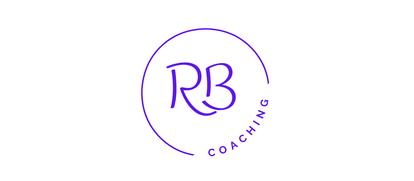Effective Stress Management: 7 Tips to Reduce Stress
Feeling Overwhelmed? Discover 7 Effective Ways to Reduce Stress and Reclaim Your Calm. Stress is an unavoidable part of life, but did you know that not all stress is harmful? Some stress can actually help you perform at your best, while too much can take a serious toll on your health and happiness. The key is learning how to manage it effectively. In this guide, you'll explore seven powerful stress management strategies—from identifying your triggers to incorporating exercise, mindfulness, and better sleep habits. Whether you're struggling with daily pressures or chronic stress, these practical tips will help you regain balance, boost resilience, and feel more in control. Start your journey toward less stress and more peace today!
STRESS MANAGEMENT
25 min read
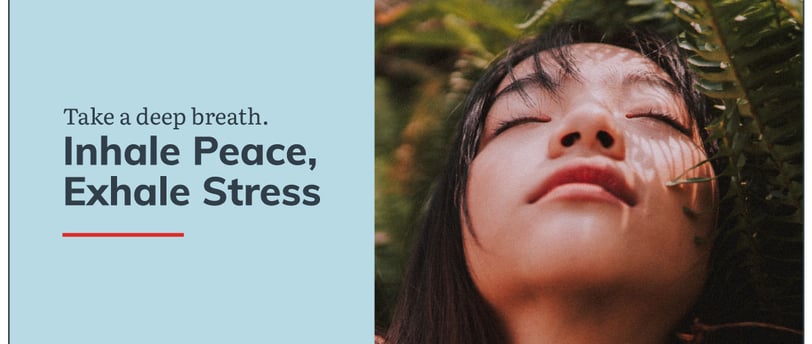

Effective Stress Management: 7 Tips to Reduce Stress
Stress is an inherent aspect of life, and it's essential to recognize its effects. Positive stress, known as "eustress," is the type that inspires you to tackle challenges and reach your objectives. It can elevate your energy levels, sharpen your concentration, and enhance your performance. Consider it the thrill you experience before a significant event or the motivation that drives you to complete a task.
Conversely, negative stress, referred to as "distress," can adversely affect your health. This occurs when stressors become too much to bear, leading to the negative effects of stress and leaving you feeling overwhelmed. Such stress can contribute to anxiety, exhaustion, and even health complications like hypertension. To achieve a healthy equilibrium, managing your stress by employing relaxation methods, engaging in physical activity, and fostering a positive outlook is vital. By doing so, you can take advantage of the upsides of positive stress while reducing the impact of negative stress on your overall well-being.
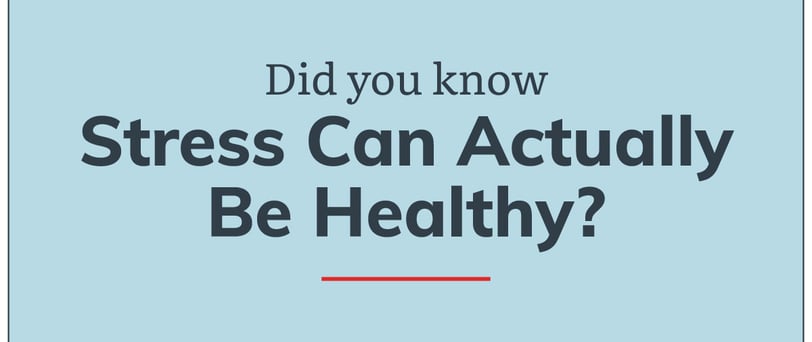

Can Stress Be Beneficial?
Absolutely! A certain amount of stress is not just healthy; it's vital for peak performance and survival. Consider it your body’s instinctive alert system, ready to activate when you need it the most. When faced with a test or a presentation, this kind of stress hones your concentration and heightens your awareness, empowering you to shine your brightest. It’s the driving force that inspires you to rise to the challenge and confront obstacles with confidence. In urgent situations, stress can even be lifesaving, activating your fight-or-flight response to keep you safe. Recognizing and harnessing this positive stress can elevate your performance and help you remain prepared without feeling overwhelmed. Welcome this healthy stress as a dynamic partner on your path to success and well-being!
Stress Can Lead to Disease and Death
While some stress can be beneficial, it's crucial to recognize when stress becomes harmful. When stress is chronic or overwhelming, it can take a toll on your body and mind. This type of stress, often referred to as "distress," can lead to various adverse health effects. Physically, it can cause headaches, muscle tension, and fatigue. It can also elevate your blood pressure and weaken your immune system, making you more susceptible to illnesses.
Chronic stress can lead to anxiety, depression, and a feeling of being constantly overwhelmed. It can also affect sleep, reduce concentration, and diminish overall quality of life. To mitigate these harmful effects, it's essential to practice stress management techniques such as deep breathing, regular exercise, and maintaining a healthy diet. Remember, the goal is to keep stress manageable, allowing you to thrive without adversely impacting your health and happiness.
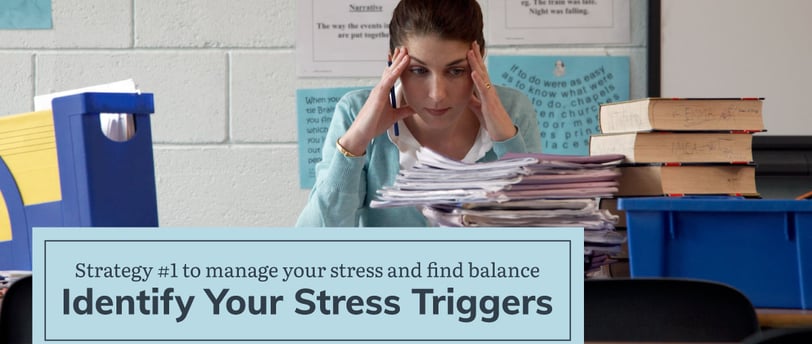

Strategy 1: Identify Your Stress Triggers
Recognizing what triggers your stress reactions is crucial in managing stress effectively. While we can't eliminate all stress from our lives, understanding what stresses you out and how it affects you is key to addressing the root causes. Imagine your car breaking down on the highway, you argue with your spouse, the stock market crashes, or your company announces layoffs. Even smaller things, like a neighbor mowing the lawn early in the morning or an overwhelming to-do list, can trigger your stress response. These events challenge your sense of control and safety, triggering your natural stress response.
So, what situations stress you out, and how do you respond to them? Stress can manifest in various ways, both physically and mentally, and everyone experiences it differently. Some common physical reactions include an increased heart rate, higher blood pressure, rapid or shallow breathing, weakened immunity, and reduced mental and physical efficiency.
Understanding how your mind and body specifically react to stress is the first step toward managing it effectively. By identifying your stress triggers and responses, you can develop strategies to manage and alleviate tension, helping you maintain a healthier and more balanced life.
Actions to Identify Your Stress Triggers
Take just 10 minutes to reflect on what triggers your stress and how it shows up in your mind and body. Grab a notebook and jot down your thoughts. Keep this notebook close by. Each time you notice a stress reaction, whether it’s a racing heart, tense muscles, or anxious thoughts, take a moment to observe it and write it down. This simple practice can help you become more aware of your stress patterns and better equipped to manage them.


Strategy 2: Exercise to Fight the Stress In Your Life
Moving your body is a powerful tool for managing and reducing stress. Routine workouts are a natural stress reliever. When you engage in physical activity, your body releases feel-good chemicals like serotonin, dopamine, and endorphins. These natural mood lifters help reduce stress's physical and emotional impact, making you feel happier and more relaxed.
Imagine how you feel after a good workout—energized, clear-headed, and more at ease. That’s because exercise not only helps to alleviate stress in the moment but also builds resilience, making you better equipped to handle future stressors. Keeping your body in peak condition through regular movement also means you have more energy, improved focus, and a stronger sense of well-being, all of which are essential for managing life’s challenges.
Finding an activity you enjoy can make a significant difference, whether it’s a brisk walk, a yoga session, a dance class, or a strength training workout. Aim to incorporate some form of movement into your daily routine, even if it’s just for a few minutes. Over time, you’ll notice a reduction in your stress levels and an overall improvement in your mood and health. Remember, the goal is to keep your body active and your mind calm so you’re always ready to take on whatever life throws your way.
Actions to Incorporate Exercise to Manage Stress
Aim to incorporate 30 minutes of exercise into your daily routine to keep stress at bay and boost your overall well-being. There are plenty of enjoyable activities to choose from! You could start your day with a brisk walk or a light jog around your neighborhood, which is great for getting your heart rate up, clearing your mind, and tackling stress. If you prefer something more structured, try a 30-minute online yoga session to enhance flexibility and calm your mind. For those who enjoy a bit of rhythm, a dance workout can be a fun and energizing option.
Strength training with light weights or bodyweight exercises like squats, lunges, and push-ups can help build muscle and increase endurance. If you have access to a pool, swimming laps is an excellent full-body workout that can also serve as a form of stress relief. The key is to find an activity you enjoy so it feels less like a chore and more like a rewarding part of your day. Dedicating just 30 minutes to exercise daily will mitigate strain and enhance your physical health and mood.
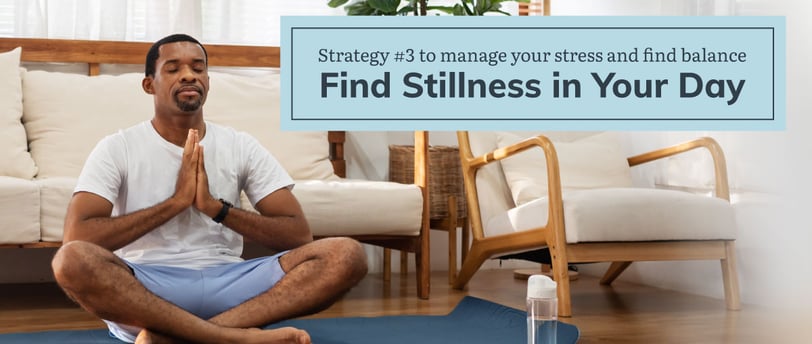

Strategy 3: Find Stillness in Your Day To Mitigate Anxiety and Stress
Meditation is an incredible tool for dealing with stress and overcoming our brain's tendency to cling to negativity. During meditation, your body naturally releases stress and counteracts the effects of the fight-or-flight response. This response, designed for short-term protection against immediate threats, is less useful in our modern lives and can be detrimental to our health when triggered too often.
So, how can you start meditating? There are many techniques available today, each offering unique benefits. One of the simplest and most effective methods is the So Hum meditation. This practice involves using your breath and repeating the "So Hum" mantra to calm your mind and relax your body. It’s a powerful way to move past the constant chatter of your thoughts and find peace in the present moment.
To begin, find a quiet place where you won’t be disturbed. You can sit in a chair or on the floor, using blankets and pillows to ensure you’re comfortable. Close your eyes and take a few deep breaths to settle in. As you inhale, silently say "So," and as you exhale, silently say "Hum." Continue this pattern, focusing on your breath and the mantra, gently allowing yourself to return to it whenever your mind wanders. With regular practice, this meditation can help you calm the mind, enhance your focus, and cultivate a deeper sense of calm and well-being.
Actions to Find Stillness in Your Day to Combat Stressors
Integrating meditation into your daily routine can be a game-changer for your stress levels and overall well-being. Here are some simple action steps to help you get started:
1 - Set a Regular Time: Choose a specific time each day for your meditation practice. It could be first thing in the morning, during a lunch break, or before bedtime. Consistency helps build a habit.
2 - Create a Calm Space: Find a quiet, comfortable spot where you won’t be disturbed. This could be a corner of your room, a cozy chair, or even a spot outside in nature.
3 - Start Small: Begin with just 5-10 minutes a day and gradually increase the duration as you become more comfortable with the practice.
4 - Use a Guided Meditation: If you’re new to meditation, try using a guided meditation app or video. This can provide structure and make it easier to focus.
5 - Focus on Your Breath: Pay attention to your breathing. Inhale deeply and exhale slowly, letting go of any tension with each breath.
6 - Incorporate a Mantra: Use a simple mantra like “So Hum” or “I am calm” to help keep your mind focused. Repeat it silently with each breath.
7 - Be Patient with Yourself: It’s normal for your mind to wander. Gently bring your focus back to your breath or mantra without judgment.
8 - Track Your Progress: Keep a meditation journal to note how you feel before and after each session. This can help you see the benefits over time and stay motivated.
9 - Join a Community: Consider joining a meditation group or class to stay inspired and learn new techniques.
10 - Integrate Mindfulness: Throughout your day, practice mindful moments by taking deep breaths, being present, and focusing on the here and now.
By following these steps, you’ll gradually make meditation a natural and beneficial part of your daily routine. This will enhance your ability to navigate stress and improve your overall well-being.


Strategy 4: Sleep to Combat Stress
Restful sleep is essential for maintaining balance and reducing stress. When you’re well-rested, you can handle stressful situations with greater ease and clarity, minimizing the negative thoughts that may arise. However, many people overlook the importance of sleep, despite it being a crucial component of overall health. Aim to get between seven and eight hours of quality, restful sleep each night. Restful sleep means falling asleep naturally, without relying on medications or alcohol.
To achieve the best sleep, align your sleep patterns with the natural rhythms of the universe, known as circadian rhythms. According to Ayurveda, the ideal sleep routine involves rising with the sun and going to bed when it’s dark, preferably by 10 p.m. This practice helps keep your internal clock in sync, promoting deeper, more restorative sleep and enhancing your overall well-being.
Action Steps to Achieve Restful Sleep
Here are some practical tips to help you achieve this:
-Establish a Consistent Routine: Go to bed and wake up at the same time every day, even on weekends, to regulate your internal clock.
-Create a Relaxing Bedtime Ritual: Before bed, engage in calming activities such as reading, gentle stretching, or meditation to signal to your body that it’s time to wind down.
-Limit Exposure to Screens: Reduce exposure to blue light from phones, tablets, and computers at least an hour before bedtime, as it can interfere with your production of melatonin, the sleep hormone.
-Keep Your Sleep Environment Comfortable: Ensure your bedroom is cool, dark, and quiet. Consider using blackout curtains, earplugs, or a white noise machine to create an optimal sleep environment.
-Watch Your Diet: Avoid heavy meals, caffeine, and alcohol close to bedtime, as they can disrupt your sleep cycle.
-Get Exercise: Engaging in physical activity during the day can help you fall asleep faster and enjoy deeper sleep at night.
-Practice Mindfulness and Relaxation: Techniques such as deep breathing, tai chi, progressive muscle relaxation, or guided imagery can help calm your mind and prepare your body for restful sleep, serving as effective stress relief.
By following these steps, you’ll improve the quality of your sleep and enhance your overall health, making it easier to stay balanced and stress-free.
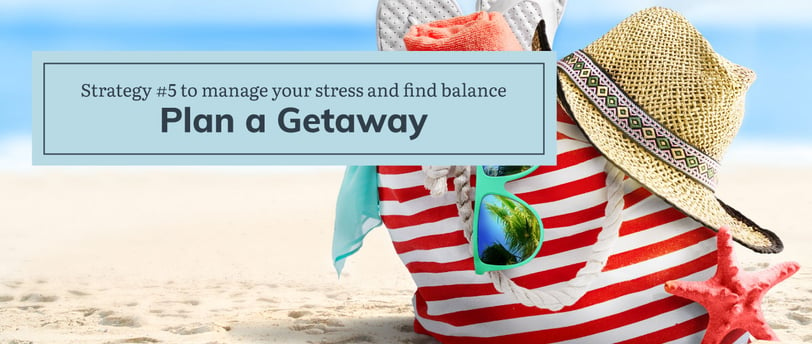

Strategy 5: Plan a Getaway as a Powerful Stress Reliever
Planning a getaway is a fantastic strategy for handling stress and rejuvenating your mind and body. As a coach, I can’t stress enough the importance of taking regular breaks from your daily routine to recharge. A well-planned getaway provides a much-needed escape from the hustle and bustle of everyday life, allowing you to disconnect from work, responsibilities, and the constant flow of information. This break is crucial for diminishing stressors and preventing burnout, giving you a fresh perspective and renewed energy when you return.
When you plan a getaway, you create an opportunity to immerse yourself in new environments and experiences. Changing your surroundings can significantly alleviate tension, whether it’s a serene beach, a mountain retreat, or exploring a vibrant city. New experiences stimulate your mind, enhance your creativity, and boost your mood, all contributing to a greater sense of well-being. The anticipation of the trip alone can elevate your mood and provide a mental escape, offering something positive to look forward to amidst daily challenges.
Moreover, a getaway allows you to focus on self-care and relaxation. You can indulge in activities that you enjoy but might not have time for in your regular routine, such as hiking, reading, or simply lounging by the pool. Engaging in these leisure activities helps lower cortisol levels, the body’s primary stress hormone, and promotes the production of endorphins, which are natural mood lifters. Taking time to relax and unwind also improves your sleep quality, boosts your immune system, and enhances your overall health.
Additionally, spending time away from your usual environment gives you the space to reflect and gain clarity. It’s an excellent opportunity to reassess your goals, evaluate your stressors, and develop new strategies for managing them. This reflection time can lead to personal growth and a stronger sense of purpose, making you more resilient to stress in the future.
Incorporating regular getaways into your lifestyle is an effective way to maintain balance and well-being. It’s not just about escaping stress but also about enriching your life with new experiences, enhancing your mental and physical health, and returning to your daily life with renewed vigor and positivity. So, start planning your next getaway, and give yourself the gift of relaxation and rejuvenation. You deserve it!
Action Steps to Plan Your Getaway to Reduce Stress
Planning a getaway is a great way to rejuvenate your mind and body. Here’s a step-by-step guide to help you plan a refreshing escape:
Identify Your Ideal Destination: Start by deciding where you want to go. Consider what type of environment will help you relax and recharge. Do you prefer a tranquil beach, a scenic mountain retreat, a bustling city, or a serene countryside for contending with stress in your life? Choose a destination that excites you and aligns with your interests.
Set a Budget: Determine how much you’re willing to spend on your getaway. This will help you narrow your options and plan your trip without financial stress. Consider all expenses, including travel, accommodation, food, and activities.
Choose Your Dates: Look at your calendar and select dates that work best for you. Try to pick a time when you can fully disconnect from work and other responsibilities. Ensure you have enough time to enjoy your trip without feeling rushed.
Book Your Travel and Accommodation: Book your travel and accommodation once you’ve chosen your destination and dates. Look for deals on flights, trains, or car rentals, and choose a comfortable place to stay that fits your budget and needs.
Plan Your Activities: Research and list activities you’d like to do during your getaway. Whether it’s hiking, sightseeing, visiting museums, or simply relaxing by the beach, having a plan ensures you make the most of your time away.
Prepare Your Itinerary: Create a flexible itinerary outlining your travel details, accommodation, and planned activities. Include some downtime to relax and enjoy spontaneous moments.
Pack Smart: Make a packing list based on your destination and planned activities. Include essentials like clothing, toiletries, medications, and any special items you’ll need for your activities. Don’t forget your travel documents, chargers, and a good book or two.
Inform Relevant Parties: Tell your family, friends, or colleagues about your getaway plans. If needed, arrange for someone to cover your work responsibilities and ensure your home is taken care of while you’re away.
Prepare for Departure: A few days before your trip, double-check your reservations and itinerary to reduce any potential stress. Ensure you have everything you need packed and ready. Consider downloading travel apps, maps, or entertainment to make your journey more enjoyable.
Embrace the Experience: Once you’re on your getaway, immerse yourself fully in the experience. Disconnect from work and daily stressors, engage in your chosen activities, and take time to relax and rejuvenate. Enjoy every moment and allow yourself to recharge fully.
By following these steps, you’ll be well on your way to planning a stress-free and rejuvenating getaway. You'll give yourself the break you deserve and return refreshed and ready to tackle life’s challenges with a renewed sense of vigor and positivity.
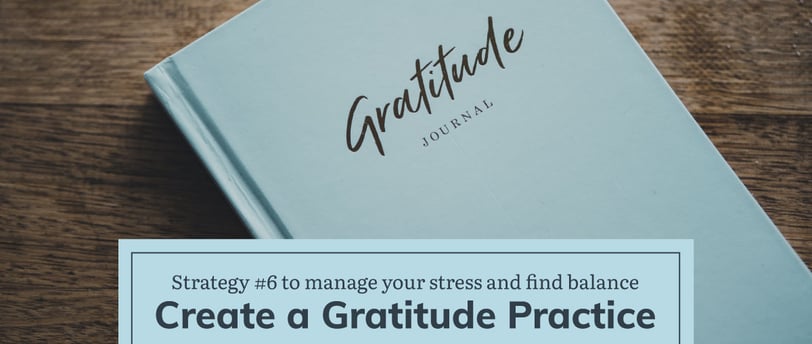

Strategy Six: Create a Gratitude Practice
As a coach, I highly recommend integrating a gratitude practice into your daily routine to enhance your mental and emotional well-being. Gratitude is more than just saying "thank you"; it's a profound way to acknowledge the good in your life, shifting your focus from what you lack to what you possess. This simple shift can significantly impact your mood and outlook, fostering a sense of peace. By regularly reflecting on the positive aspects of your day, whether they're small moments or significant achievements, you cultivate a positive mindset that can transform your approach to life's challenges.
Start by keeping a gratitude journal, where you jot down three things you are thankful for daily. This practice can help you recognize the abundance in your life, enhance your relationships, and even improve your physical health by promoting relaxation. Embracing gratitude enriches your life and encourages you to contribute positively to others, creating a cycle of generosity and appreciation that extends beyond yourself.
Action Steps to Launch a Gratitude Practice
Setting up a gratitude practice is a simple yet powerful way to enhance your well-being. Here’s a step-by-step guide to get you started:
Choose a Gratitude Journal: Select a notebook or journal specifically for your gratitude practice. You can also use a digital app to track your stress levels and find coping mechanisms.
Set a Regular Time: Decide on a consistent time each day to reflect on your gratitude. Morning or bedtime are great options to start or end your day on a positive note.
Start Small: Begin by writing down three things you’re grateful for each day. These can be simple things like a warm cup of coffee, a kind gesture from a friend, or a beautiful sunset.
Be Specific: Try to be specific about what you’re grateful for. Instead of writing, “I’m grateful for my family,” you could write, “I’m grateful for the fun conversation I had with my sister today.”
Reflect on Why: Take a moment to consider why you’re grateful for each item. This will deepen your sense of appreciation and help you connect more emotionally with your gratitude.
Include Different Aspects of Life: Think about various areas of your life, such as relationships, personal achievements, nature, or simple pleasures. This broadens your perspective and helps you recognize the abundance around you, which is essential for mitigating stress.
Make It a Habit: Consistency is key to effectively dealing with stress and maintaining a healthy diet. Try to make your gratitude practice a daily habit. Setting a reminder on your phone can help you stay on track.
Share Your Gratitude: Occasionally, share your gratitude with others. Telling someone why you appreciate them boosts your mood and strengthens your relationships.
Reflect on Challenging Times: Even in challenging situations, try to find something to be grateful for. This can help you develop resilience and a more positive outlook.
Enjoy the Process: Keep the practice enjoyable and stress-free. It’s about cultivating a positive mindset, so allow yourself to savor the moments of gratitude without pressure.
By following these steps, you’ll establish a meaningful gratitude practice that enhances your mental and emotional well-being, helping you approach each day with a positive and appreciative mindset.
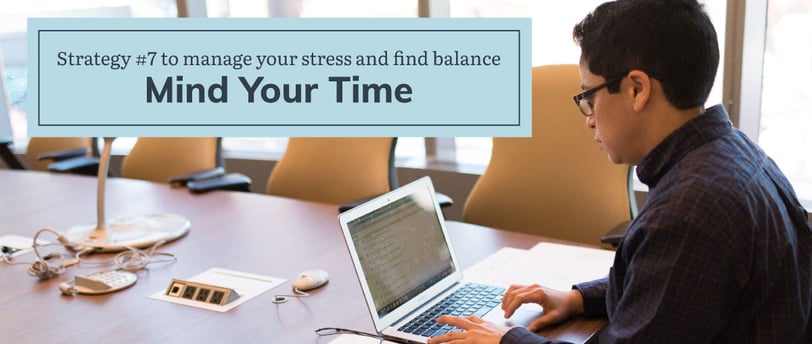

Strategy 7: Better Manage your Time to Create a Healthy Lifestyle
As a coach, I can't stress enough the importance of scheduling in achieving a balanced and stress-free life. Scheduling helps you organize your day, prioritize tasks, and allocate time for both work and personal activities, ensuring a harmonious balance that is crucial for coping with chronic stress. By setting aside specific times for tasks, self-nurturing, exercise, and relaxation, you create a structured routine that reduces uncertainty and overwhelm.
This proactive approach helps you manage your time more efficiently, increases productivity, and allows you to dedicate quality time to activities that nourish your mind, body, and soul. Moreover, a well-planned schedule can prevent burnout by ensuring you don’t overcommit and can easily identify opportunities for rest and rejuvenation. Embracing scheduling as part of your daily routine is a powerful strategy to enhance your overall well-being, maintain a sense of control, and live a more fulfilling and stress-free life
Action Steps to Better Manage Your Time
Implementing an effective scheduling routine is key to achieving a balanced life. Here are steps to help you get started:
Identify Your Priorities: List your top priorities, including work, family, personal care, and leisure activities. Knowing what’s important to you will help you allocate your time effectively.
Use a Planner or Digital Calendar: Choose a planning tool that works best for you, whether it’s a physical planner, a digital calendar, or a scheduling app. This will be your central hub for organizing your tasks and activities.
Set Clear Goals: Define your daily, weekly, and monthly goals. Having clear objectives helps you stay focused and motivated.
Create a Daily Schedule: Block out time for each activity, starting with your highest priorities. Include time for work tasks, exercise, meals, relaxation, and sleep.
Break Down Tasks: Divide larger tasks into smaller, manageable steps. This makes them less daunting and easier to fit into your schedule.
Schedule Breaks and Downtime: Ensure you include short breaks throughout your day and longer periods of downtime to recharge. This prevents burnout and maintains your energy levels.
Be Flexible: While sticking to your schedule is important, allow some flexibility for unexpected events or changes. This helps you adapt without feeling stressed.
Review and Adjust: At the end of each day or week, review your schedule to see what worked and what didn’t. Adjust your plan as needed to improve efficiency and balance.
Prioritize Wellness: Schedule time for activities that promote your well-being, such as exercise, hobbies, meditation, or spending time with loved ones.
Set Reminders: Use reminders or alarms to stay on track with your schedule and ensure you don’t miss important tasks or appointments.
Reflect and Celebrate: At the end of the day, take a moment to reflect on your accomplishments. Celebrate your achievements, no matter how small, to maintain a positive mindset.
By following these steps, you’ll create a well-structured schedule that helps you manage your time effectively and achieve a balanced, fulfilling life.


Finding the Possible
As a coach, the quote, “You must find the place inside yourself where nothing is impossible,” is a powerful reminder of the limitless potential within each of us. This quote encourages you to tap into your inner strength and belief system, fostering a mindset where challenges are seen as opportunities rather than obstacles. You can overcome stress and self-doubt by cultivating a positive and resilient mindset, unlocking your true potential.
Confidence, creativity, and determination reside in this inner place, allowing you to approach life’s challenges with a sense of possibility and optimism. Embracing this mindset eases anxiety and empowers you to achieve your goals and live a more fulfilling and balanced life. By consistently nurturing this inner space through practices like focused awareness, meditation, and positive affirmations, you can maintain a strong foundation of belief in your abilities, making the impossible seem achievable.
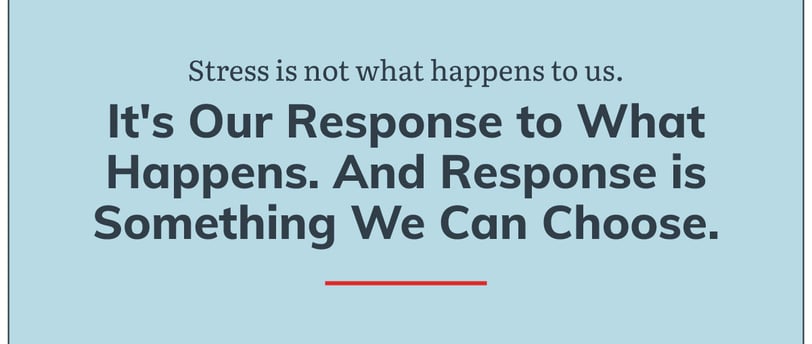

Choosing Our Response to Stressful Situations
I emphasize that “Stress is not what happens to us. It's our response to what happens. And the response is something we can choose.” This perspective is empowering because it highlights that while we can’t always control external events, we have control over how we react to them. Recognizing this distinction allows you to take charge of your emotional and mental well-being.
When faced with a stressful situation, you have the power to choose a response that aligns with your values and goals rather than reacting impulsively out of fear or frustration. Techniques like diaphragmatic breathing and positive self-talk can help you stay calm and centered, allowing you to approach challenges with a clear and constructive mindset.
By focusing on your response, you can transform potential stressors into opportunities for growth and learning. This proactive approach reduces stress's impact on your health and enhances your resilience and ability to navigate life’s ups and downs with greater ease and confidence. Embrace the power of choice in your responses, and you’ll find yourself more equipped to handle stress, leading to a more balanced and fulfilling life.


Inhale Peace, Exhale Stress
I often remind my clients to “Take a deep breath. Inhale peace, exhale stress.” This simple yet powerful practice is a cornerstone of effective stress management. Deep breathing helps calm your nervous system, reduces anxiety, and brings your focus back to the present moment. By intentionally inhaling deeply, you invite a sense of calm and relaxation into your body and mind. As you exhale, imagine releasing any tension or stress you’re holding onto.
Incorporating focused breathing techniques into your daily routine is easy and can be done anywhere, whether you’re at work, home, or on the go. Take a few moments throughout your day to pause, close your eyes if you can, and take slow, deep breaths. Breathe in through your nose, filling your lungs completely, and then exhale slowly through your mouth, letting go of any stress or negativity.
This practice helps lower your heart rate and blood pressure and enhances your mental clarity and emotional resilience. By making it a regular habit, you equip yourself with a simple yet effective tool to manage stress, enhance your well-being, and maintain a sense of peace and balance in your daily life.
Focus on What You Can Control, Let Go of What You Cannot
As a coach, I encourage you to “Focus on what you can control and let go of what you cannot.” This mindset is a powerful strategy for reducing stress and enhancing your well-being. Life often presents us with challenges and uncertainties, but by concentrating on the aspects within your control, you empower yourself to take meaningful action and make positive changes. This could include managing your reactions, setting achievable goals, and maintaining healthy habits. You will find that your physical and mental health benefit from these practices.
Conversely, stressing over things beyond your control, like other people’s actions or unpredictable events, only drains your energy and increases anxiety. Learning to release these worries frees up mental and emotional space, allowing you to focus on what truly matters and what you can influence.
Incorporate practices like full breaths, journaling, or attentiveness to help you identify and differentiate between controllable and uncontrollable factors. By consistently focusing on what you can control and letting go of the rest, you build resilience, enhance your problem-solving abilities, and cultivate a more peaceful and balanced life. Embrace this approach, and you’ll find yourself navigating life’s challenges more easily and confidently.
Stay Present
I emphasize, "Mindfulness is the art of staying present, even when your mind wants to wander.” Practicing presence involves intentionally focusing on the present moment without judgment, which can significantly calm the mind and enhance your overall well-being. In today’s fast-paced world, it’s easy for your mind to get caught up in worries about the future or ruminations about the past. Being mindful of the present moment teaches you to gently bring your attention back to the here and now, helping you to experience life more fully and respond to situations with greater clarity and calmness.
Incorporating presence into your daily routine can be as simple as taking a few minutes each day to focus on your breath, noticing the sensations in your body, or paying attention to the sights, sounds, and smells around you. Doing so creates a space between stimulus and response, allowing you to choose your reactions more thoughtfully rather than impulsively out of habit or stress. This practice enhances your mental clarity and emotional resilience and fosters a deeper connection to yourself and the world around you. Make this a part of your daily life, and you’ll find it easier to stay grounded and enjoy a greater sense of peace and fulfillment.
Self-Care to Give the World your Best
As a coach, I believe wholeheartedly that “Self-care is giving the world the best of you, instead of what’s left of you.” Prioritizing self-nurturing is essential for maintaining your physical, emotional, and mental well-being. When you take the time to care for yourself, you recharge your energy, boost your resilience, and enhance your overall health, allowing you to show up as your best self in all areas of your life while also promoting stress relief. Self-care isn’t selfish; it’s a vital practice that ensures you have the strength and vitality to meet your responsibilities and pursue your passions with enthusiasm and vigor.
Nurturing yourself can include routine workouts, healthy eating, adequate sleep, and engaging in hobbies or relaxation techniques that bring you joy and peace. Investing in your well-being ensures that you’re not just getting by but thriving and can offer your full potential to the world. Embrace putting your oxygen mask on first (ensuring your internal battery is well charged) as a non-negotiable part of your routine, and you’ll find yourself more energized, focused, and capable of making a positive impact in your life and those around you.


Find the Good in Every Day
I encourage you to embrace the mindset, "Every day may not be good, but there’s something good in every day.” This perspective is a powerful tool for maintaining a positive outlook and feeling at peace. Life is full of ups and downs; not every day will go perfectly. However, by consciously looking for the good in each day, no matter how small, you can cultivate a sense of gratitude and positivity that enhances your overall well-being. This could be a kind gesture from a friend, a beautiful moment in nature, or a personal accomplishment, however minor it may seem.
Focusing on these positive aspects shifts your attention away from stressors and challenges, fostering a more balanced and resilient mindset. Make it a daily practice to reflect on and acknowledge the good in your day, and you’ll find yourself better equipped to handle stress and more appreciative of the richness of your life. This simple habit can transform your approach to each day, helping you find joy and contentment in the present moment.
Calm Your Mind
I wholeheartedly believe that “Your calm mind is the ultimate weapon against your challenges.” Cultivating a calm and centered mind equips you with the clarity and resilience needed to tackle life’s obstacles effectively. When you maintain a state of calm, you can approach problems with a clear perspective, make thoughtful decisions, and respond to stressors more efficiently. Techniques such as deep breathing, meditation, and mindfulness can help you develop this calm mindset.
By integrating these practices into your daily routine, you enhance your ability to stay composed and focused, even in the face of adversity. Remember, a calm mind is not just a state of being but a powerful tool that empowers you to navigate challenges with grace and confidence. Embrace this inner calm, and let it guide you through life’s ups and downs, turning challenges into opportunities for growth and success.

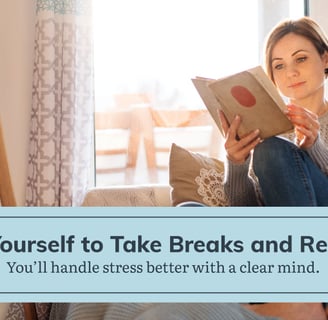
Detox From Stress
I often remind my clients that “Stress is the trash of modern life—we all generate it, but if you don’t dispose of it properly, it will pile up and overtake your life.” This analogy highlights the importance of regularly managing and releasing stress to maintain a balanced and healthy lifestyle. Just as you wouldn’t let garbage accumulate in your home, it’s essential to actively address and clear out stress from your mind and body.
Effective stress management techniques, such as regular exercise and relaxation techniques, are like your personal waste disposal system, helping to clear out the mental and emotional clutter. By consistently practicing these techniques, you prevent stress from building up and negatively impacting your health and well-being. Remember, proactive stress management is key to keeping your life clean, organized, and free from the overwhelming burden of accumulated stress. Make it a habit to “take out the trash” regularly, and you’ll enjoy a more peaceful and fulfilling life.
Take Breaks and Recharge
I can’t emphasize enough the importance of taking regular breaks and allowing yourself to recharge. The principle, “Allow yourself to take breaks and recharge. You’ll handle stress better with a clear mind,” is essential for maintaining your overall well-being and productivity. Taking breaks throughout your day helps to reset your mind and body, preventing burnout and alleviating tension. Whether it’s a short walk, a few minutes of deep breathing, or simply stepping away from your work, these moments of rest are crucial for maintaining mental clarity and focus.
By giving yourself permission to pause and recharge, you create a balanced approach to your daily tasks, enhancing your ability to handle stress more effectively. Remember, a clear and refreshed mind is your best tool for navigating life’s challenges with resilience and grace. Make it a priority to incorporate regular breaks into your routine, and you’ll find yourself more energized, focused, and better equipped to manage stress.
Positivity and Gratitude
I firmly believe in the transformative power of gratitude with the principle, “Gratitude turns what we have into enough, and more.” Embracing gratitude shifts your focus from what you lack to appreciating the abundance already present in your life. This simple yet profound practice can significantly reduce stress and enhance your overall sense of well-being.
By regularly acknowledging and appreciating the positives in your life, you cultivate a mindset of contentment and fulfillment. This helps you feel more satisfied and less anxious an opens your eyes to the richness of your experiences and relationships. Incorporating a daily gratitude practice, such as writing down three things you’re thankful for, can help you maintain this positive outlook, turning everyday moments into a source of joy and reducing the impact of stress on your life.
You've Survived Your Worst Days, You Can Handle Today Too!
I want to remind you of the incredible resilience you possess with the thought, “Remember, you’ve survived 100% of your worst days. You can handle today too.” This powerful affirmation is a testament to your strength and endurance through life’s challenges. It encourages you to reflect on past difficulties you’ve overcome, reinforcing your ability to confidently navigate current stressors.
By acknowledging your past victories, you build a sense of assurance and inner strength, empowering you to face today’s challenges with a calm and resilient mindset. Embrace this perspective, and let it guide you in managing stress, knowing that you have the capability to handle whatever comes your way. Your track record of resilience is a strong foundation for facing today’s demands and achieving a balanced, stress-free life.
Frequently Asked Questions
What is "stress management" and why is it important?
Stress management refers to a range of techniques and strategies designed to help you manage stress effectively in your daily life. It's crucial because stress in your life can lead to various physical and mental health issues if not addressed. By learning how to reduce stress, you can improve your overall well-being, enhance your productivity, and enjoy a more fulfilling life. Understanding stress management is the first step toward taking control of your stress levels and living a happier, healthier life.
What are some effective techniques to reduce stress?
There are numerous stress management techniques available to help you reduce stress effectively. Some of the most effective ones include:
Deep breathing exercises to calm your mind and body.
Practicing mindfulness to stay present and focused.
Engaging in physical activity like walking, jogging, or tai chi to release endorphins.
Employing relaxation techniques such as meditation or yoga.
Maintaining a healthy diet rich in nutrients to support your body's ability to cope with stressors.
Establishing a good time management routine to keep your tasks organized.
Seeking social support from friends and family when feeling overwhelmed.
These strategies, along with those outlined in this article, can help you identify what works best for you in dealing with stress.
How can mindfulness help in stress management?
Mindfulness is a powerful tool in stress management that involves being fully present in the moment and acknowledging your thoughts and feelings without judgment. Practicing mindfulness can increase your awareness of your stress response, allowing you to better understand your stressors and how they affect you. This heightened awareness can improve coping strategies and a greater ability to deal with stress effectively. Research has shown that mindfulness can significantly lower stress levels, improve emotional regulation, and enhance overall physical and mental health.
What are some relaxation techniques for effective stress management?
Relaxation techniques are essential components of effective stress management. Some popular methods include:
Deep breathing exercises that help calm your nervous system.
Progressive muscle relaxation, where you tense and then relax each muscle group in your body.
Guided imagery, which involves visualizing a peaceful scene to promote relaxation.
Meditation, which fosters a sense of calm and clarity.
Tai chi, a form of gentle exercise that integrates movement and mindfulness.
Incorporating these techniques into your daily routine can significantly improve your ability to reduce stress and enhance your quality of life.
